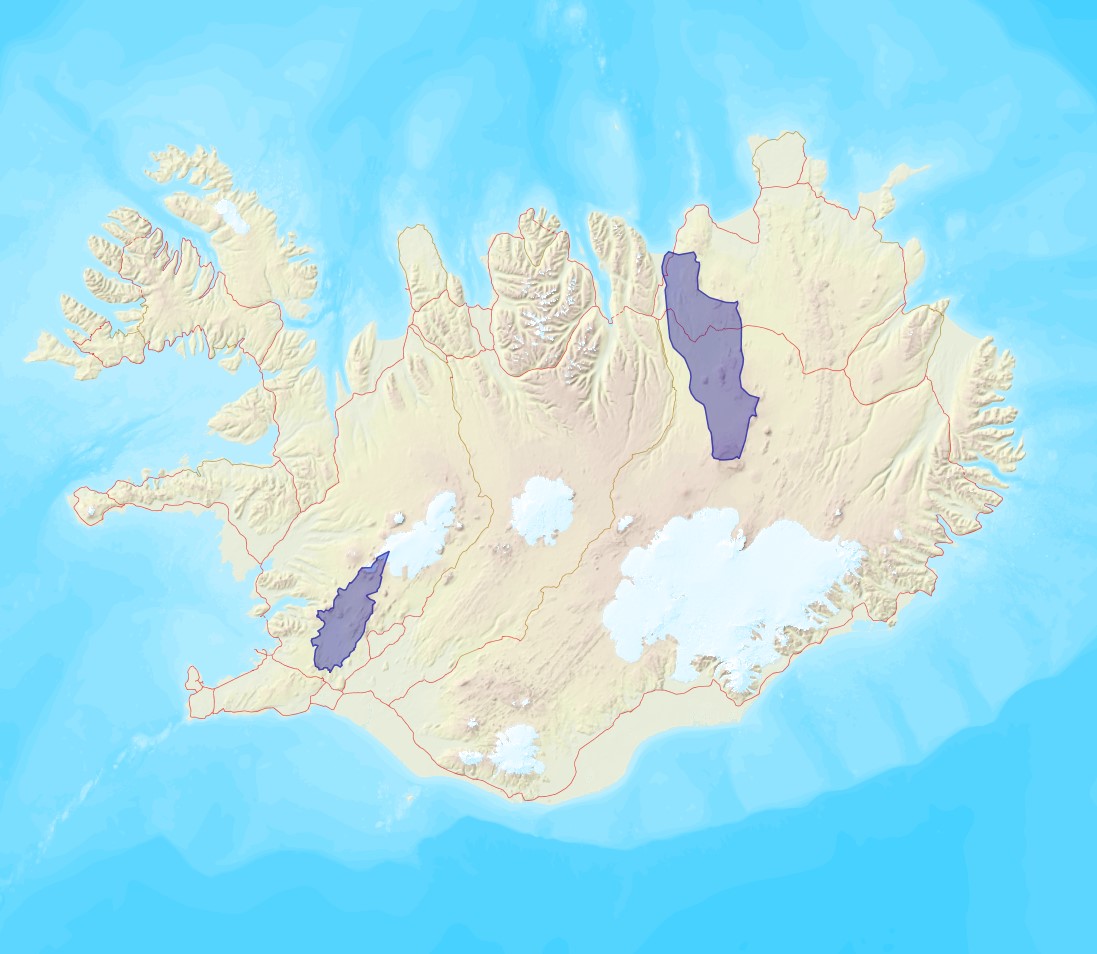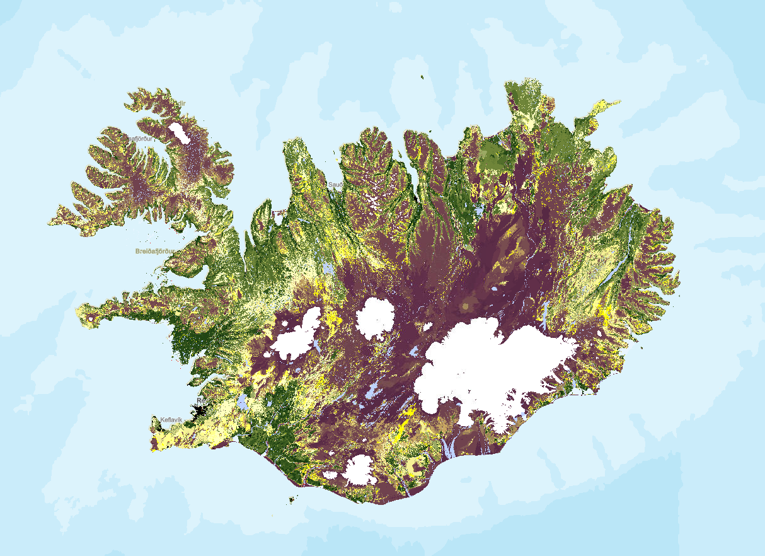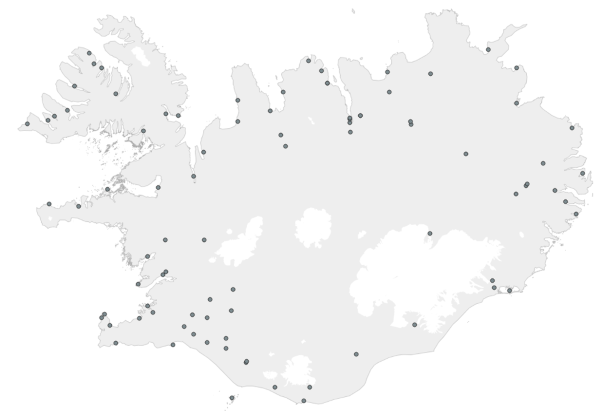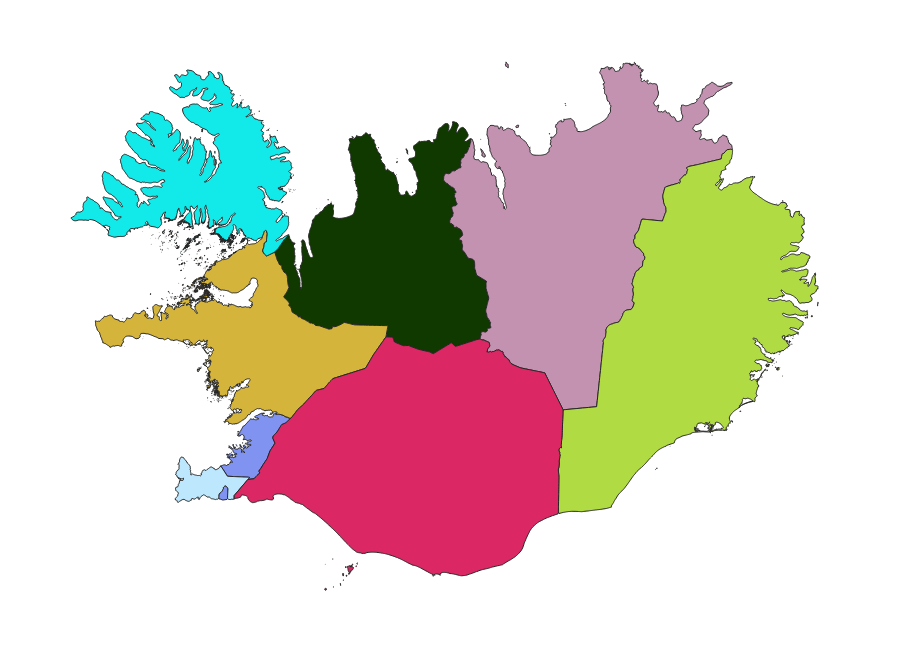environment
Type of resources
Available actions
Topics
INSPIRE themes
Keywords
Contact for the resource
Provided by
Years
Formats
Representation types
Update frequencies
status
Scale
-

Vinsamlega hafið samband við Umhverfisstofnun vegna nánari upplýsinga.
-

Gögnin sýna mörk veiðisvæða. Fyrir nánari upplýsingar um gögnin er bent á að hafa samband við Umhverfisstofnun.
-

Upplýsingar um gönguleiðir á friðslýstum svæðum. Fyrir frekari upplýsingar um gögnin er bent á að hafa samband við Umhverfisstofnun.
-

Gögnin sýna eldri mörk veiðisvæða á Íslandi. Vinsamlegast hafið sambandi við Umhverfisstofnun fyrir nánari upplýsingar.
-

Vinsamlega hafið samband við Umhverfisstofnun vegna nánari upplýsinga.
-

Stöðumat á ástandi gróður- og jarðvegsauðlinda Íslands. Landupplýsingaþekjan fyrir stöðumat Grólindar er á rastaformi. Nákvæmni gagna miðast við mælikvarða 1:100.000. Stöðumat GróLindar sýnir, á grófum kvarða, stöðu gróður- og jarðvegsauðlinda Íslands eins og hún er í dag. Stöðumatið er unnið upp úr kortlagningu vistgerðaflokka Náttúrufræðistofnunar Íslands frá 2016 og kortlagningu á jarðvegsrofi á vegum Rannsóknastofnunar landbúnaðarins og Landgræðslunni frá 1997. Landgræðslan og Skógræktin voru sameinaðar 1. janúar 2024 og ber stofnunin heitið Land og skógur. Frekari upplýsingar um aðferðafræðina á bak við stöðumatið má sjá í ritinu: Bryndís Marteinsdóttir, Elín Fjóla Þórarinsdóttir, Guðmundur Halldórsson, Jóhann Helgi Stefánsson, Jóhann Þórsson, Kristín Svavarsdóttir, Magnús Þór Einarsson, Sigþrúður Jónsdóttir og Sigmundur Helgi Brink, 2020. Stöðumat á ástandi gróður- og jarðvegsauðlinda Íslands. Aðferðafræði og faglegur bakgrunnur. Rit Landgræðslunnar nr. 3. Gunnarsholt, Ísland. https://grolind.is/wp-content/uploads/2020/06/GroLind_stodumat_18_06_2020.pdf
-

Gögnin veita upplýsingar um hvar hægt er að losa úr ferðasalernum. Í reglugerð um hollustuhætti segir að á tjald- og hjólhýsasvæðum eða í námunda við það skuli vera aðstaða til að tæma og hreinsa ferðasalerni. Rekstraraðili svæðisins skuli veita upplýsingar um og vísa á aðstöðuna, en einnig er hægt að leita upplýsinga um staðsetningu slíkrar aðstöðu annars staðar, t.d. hjá upplýsingamiðstöðvum og á bensínstöðvum. Árið 2012 tók Umhverfisstofnun saman lista yfir þá staði á landinu þar sem finna má aðstöðu til losunar ferðasalerna. Listinn er byggður á upplýsingum frá heilbrigðiseftirliti sveitarfélaganna.
-

Íslandi er skipt upp í loftgæðasvæði og bera heilbrigðiseftirlit viðkomandi svæða ábyrgð á því að ekki sé farið yfir mörk þar, og áætlunum um hvernig bregðast á við ef farið er yfir mörk.
-

Corine Land Cover (CLC) 2018 and CLC change 2012-2018 are two of the datasets produced within the frame of the Initial Operations of the Copernicus programme (the European Earth monitoring programme previously known as GMES) on land monitoring.Corine Land Cover (CLC) provides consistent information on land cover and land cover changes across Europe. This inventory was initiated in 1985 (reference year 1990) and established a time series of land cover information with updates in 2000, 2006. 2012 and now 2018. CLC products are based on photointerpretation of satellite images by national teams of participating countries - the EEA member and cooperating countries – following a standard methodology and nomenclature with the following base parameters: 44 classes in the hierarchical three level Corine nomenclature; minimum mapping unit (MMU) for status layers is 25 hectares; minimum width of linear elements is 100 metres; minimum mapping unit (MMU) for Land Cover Changes (LCC) for the change layers is 5 hectares. The resulting national land cover inventories are further integrated into a seamless land cover map of Europe. Land cover and land use (LCLU) information is important not only for land change research, but also more broadly for the monitoring of environmental change, policy support, the creation of environmental indicators and reporting. CLC datasets provide important datasets supporting the implementation of key priority areas of the Environment Action Programmes of the European Union as protecting ecosystems, halting the loss of biological diversity, tracking the impacts of climate change, assessing development in agriculture and implementing the EU Water Framework Directive, among others. More about the Corine Land Cover (CLC) and Copernicus land monitoring data in general can be found at http://land.copernicus.eu/
-

Íslenska: Vetrarfuglatalningar eru ein lengsta samfellda vöktun sem stunduð hefur verið hér á landi og sú sem tekur til flestra fuglategunda. Frá upphafi hafa áhugamenn unnið þetta verk í sjálfboðavinnu og á annað hundrað manns taka þátt. Talningar fara fram á föstum dögum í kringum áramót. Markmið vetrarfuglatalninga er að safna upplýsingum um fjölda og dreifingu fugla að vetrarlagi. Talningar eru staðlaðar og nýtast til vöktunar einstakra stofna. Gögnin sýna þau svæði á Íslandi þar sem fuglar eru taldir á veturna og númersvæðanna sem eru talin. Sjá niðurstöður vetrarfuglatalninga: https://www.natt.is/is/vetrarfuglatalningar-nidurstodur English: Winter bird counts are one of the longest-running continuous monitoring efforts in Iceland and the one that covers the greatest number of bird species. From the beginning, this work has been carried out by volunteers, with around a hundred people participating. The counts take place on fixed dates around the New Year. The aim of the winter bird counts is to collect information on the number and distribution of birds during the winter. The counts are standardized and are used to monitor individual populations. The data show the areas in Iceland where birds are counted during the winter, as well as the numbered survey areas included in the counts.
 Lýsigagnagátt
Lýsigagnagátt